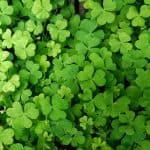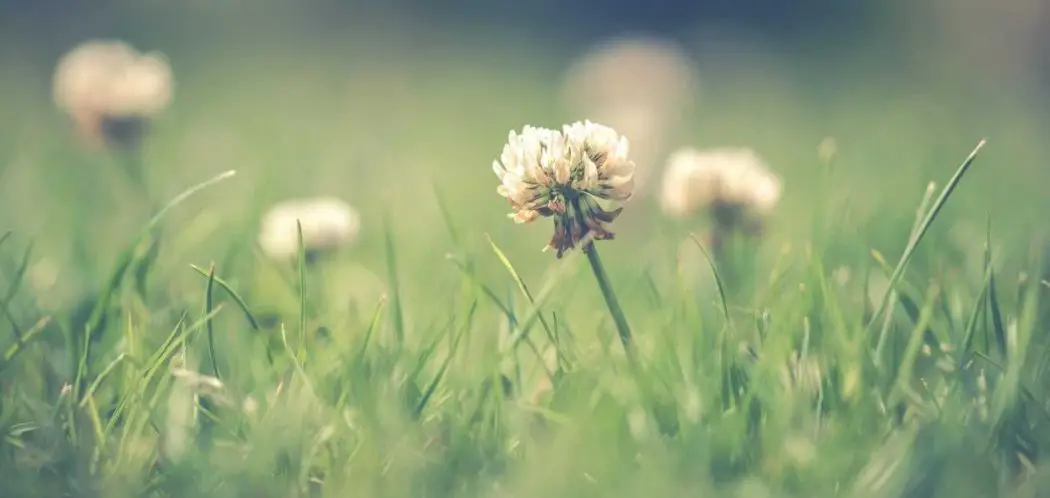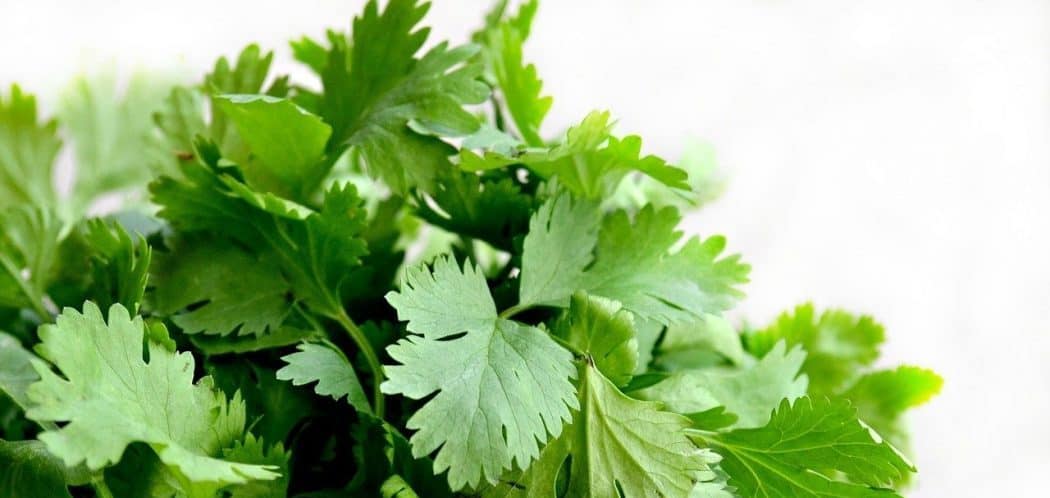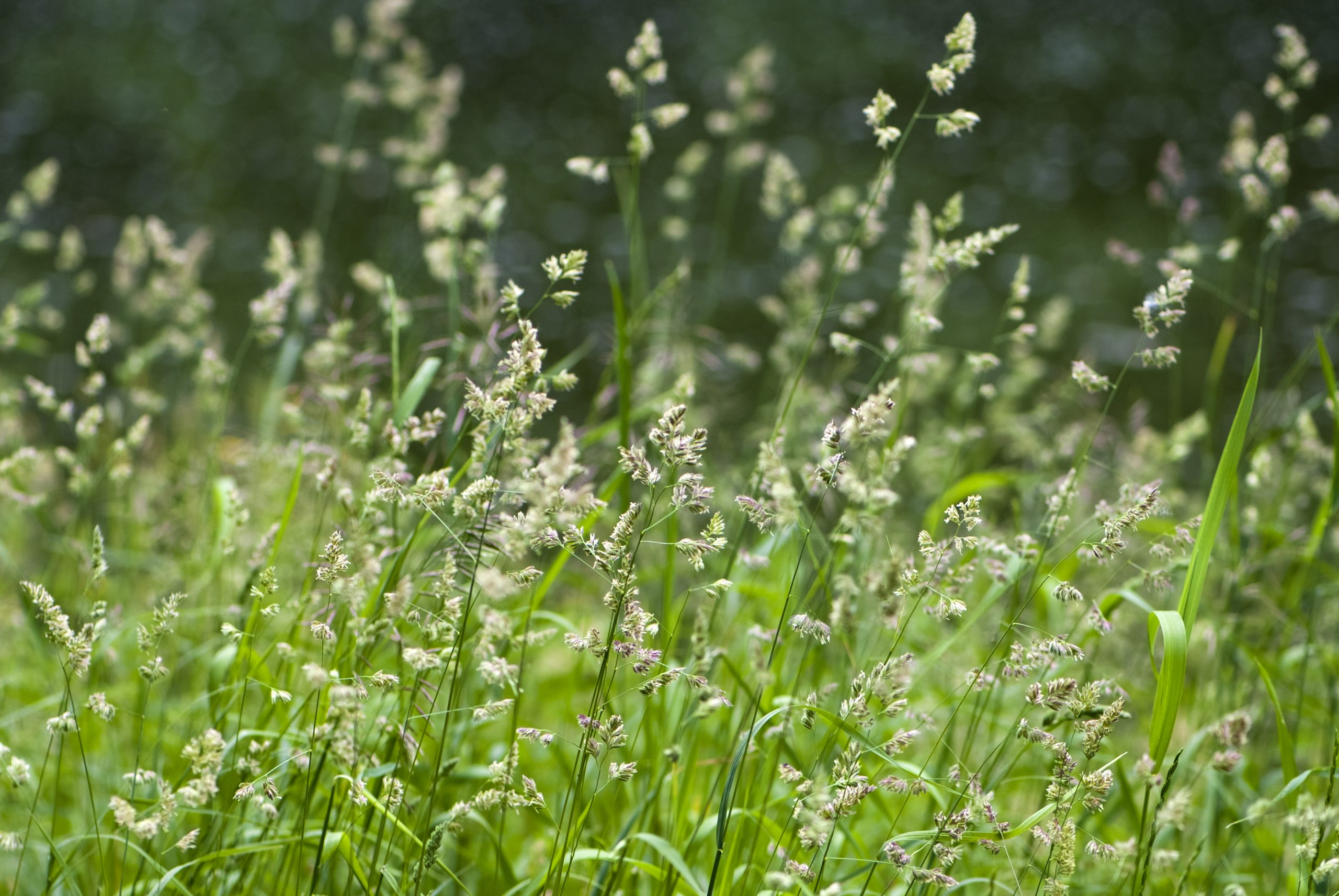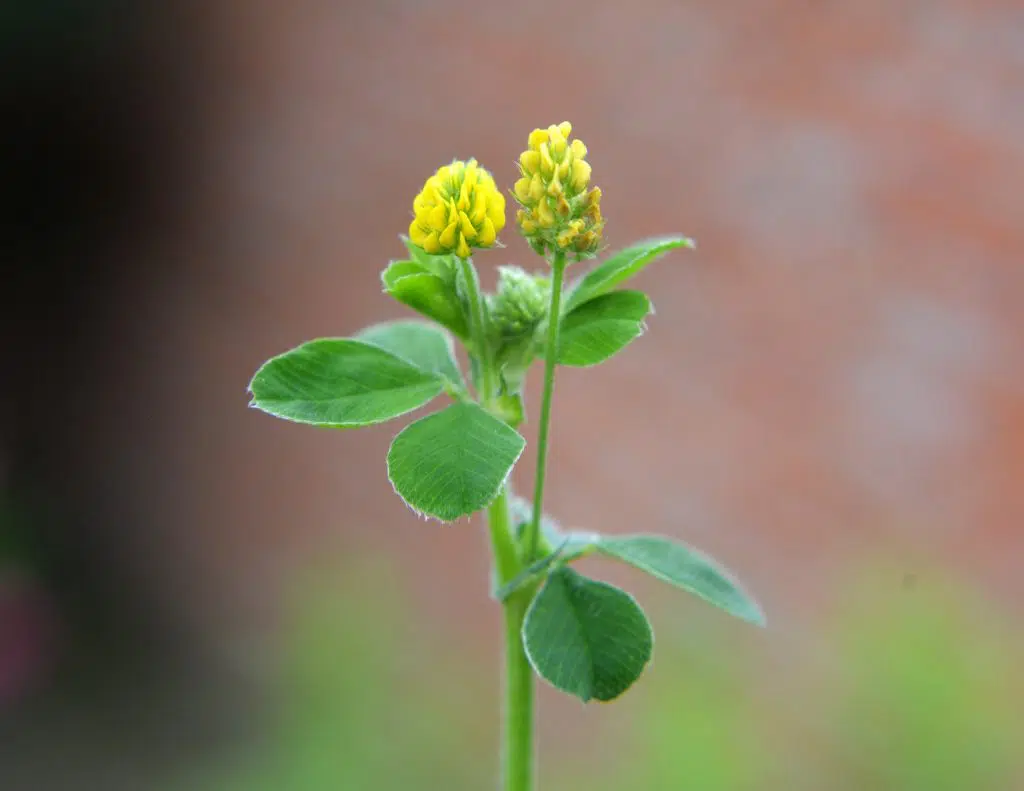
The black medic plant resembles clover and in fact, many people think that’s what it is. The main difference is that the black medic plant has bright yellow flowers and a short stalk in the middle leaflet. The lateral leaflets look a little different because they’re attached close to the petiole of the plant.
What Is Black Medic?
Black medic, also called yellow trefoil, is found throughout the U.S. and Southern Canada but is native to Europe and temperate Asia. This is a low-growing crawling summer annual usually considered a noxious weed. It is very commonly found throughout the entire United States. Just as with clover, black medic — or Medicago lupulina — is a legume that is able to capture nitrogen from the atmosphere and then convert it into a usable form in plants.
If you’re wondering where you can find black medic, just look in dry, sunny areas in waste-ground and turf, as well as along railroads and roadsides. Regardless of where the plant is found, it is often a sign that the soil has low levels of nitrogen in it. If you leave it undisturbed, it will outcompete weaker grass and form large colonies that seem to be out of control.
Five Things to Look for in Identifying Black Medic
Since black medic can look a lot like regular clover, it’s good to know what to look for so that you can determine exactly what you’re dealing with.
Here are five characteristics that signal that you’re dealing with black medic plants and not regular clover:
- It produces small, bright yellow flowers in late summer
- It resembles weeds and is low-growing and crawling
- Its leaves are made in groups of three
- Its leaves are shaped like teardrops
- It is often found by sidewalks and roadsides
Black medic also has stems growing out of the base that look a little bit “hairy,” and the plant always grows very close to the ground. It does, however, spread up to about two feet, so it can take up a lot of space on the ground.
Features of Black Medic
The prostrate broadleaf weed known as black medic is usually classified as a cool-season summer annual. That being said, in mild winters some of them can survive and act as a perennial. Black medic plants spread easily by seed, and what can make them even more difficult to tell apart from white clover is that both of these plants are often found growing together in turf and in many of the same sites.
The yellow flowers of the black medic form in clusters of between 10 and 50. Bees, especially honeybees, love these flowers. Fruits will form after pollination, and they look like small kidneys that are grouped in clusters. When the coiled seed pods get ripe, they turn black, and each of the pods has a single seed that is either brown or gold in color.
If you mow high, fertilize the soil properly, and make sure that the soil is irrigated well, black medic can be managed properly. To control the weeds, you can pull them by hand, which is much easier if you do this after you allow the rain to soften the soil a bit. If you have a large, dense area of the plants, you can apply a broadleaf herbicide to the ones that are actively growing from seedling to flower growth stage.
In fact, keeping the weeds under control can be a challenge and sometimes requires the use of chemicals in late spring through early summer and again from early to mid autumn.
Another interesting feature of black medic is the fact that it is an edible plant. According to many experts, Native Americans in California would parch the seeds of the black medic and even ground them into flour. In Eurasia where the plant originated, it was even used as a potherb. It seems that Indians ate the seeds of the plants, while Eurasians ate only the foliage.
Either way, black medic has a lot of protein and fiber, not to mention phosphorus, calcium, magnesium, and potassium. You can even spread the seeds on a salad, although many people claim their taste is rather bitter. As with other plants, there are contraindications with black medic weeds, so you should study the plant and use caution if you’re considering consuming the plant.
Black Medic Coloring
Black medic weeds have green, teardrop-shaped leaves and flowers that look like bright yellow clusters. The seed pods are unique because they turn black once they’re ready to drop. The combination of the green leaves and the yellow flowers is stunning, but it’s still good to remember that these are weeds that most people try to get rid of.
Other Identifiers
Yet another trait that black medic has is the very fine teeth found along the edges of the leaflets. The center one also has a longer stalk, which is something that helps distinguish it from regular clovers. From May to September the yellow flowers will grow in clusters, and the more black medic you find in your yard, the more likely it is that the soil is low in nutrients.
In fact, black medic thrives in poor soil and especially during drought conditions. If your goal is to get rid of the black medic in your yard, the first thing you should do is make sure the soil is nice and healthy. It is even possible to eliminate the weed entirely, which means the odds of it growing back the following year get much slimmer.
When Are You Likely to See Black Medic?
You are more likely to see black medic in your garden during certain times of the year and in certain conditions. Black medic is normally an annual but in warmer areas, it can actually survive for many years before it dies.
It is also much more likely to grow:
- When the soil is compacted
- Next to sidewalks or by roadsides (since foot and car traffic usually compacts the soil)
- When the soil hasn’t been aerated in a very long time (or ever)
- If the soil doesn’t have enough nutrients
In addition, the yellow flowers usually bloom in late summer, so look for them during that time of the year. Keep in mind that when you’re trying to get rid of black medic, chemicals should be used as a last resort. Why? Because chemicals tend to kill everything around these weeds, including things you don’t want killed. As a result, organic approaches are much safer and much more environmentally friendly, which is why they should be used first.
Other Weeds That Resemble Black Medic
As mentioned previously, black medic looks a lot like several other weeds, so let’s take a look at some of them so you can familiarize yourself with the differences.
- Clover. There are roughly 300 species of clovers, and they are part of the pea family. Like black medic, clovers occur in many temperate and subtropical climates and are very attractive to bees. Clovers have three-toothed leaflets and small fragrant flowers. They also grow into dense clusters and their flowers are usually yellow, pink, red, or white. They have small fruits with one or two seeds and are frequently found in lawns and other areas with lots of foot traffic. The most common types of clover include the red, white, and alsike clover.
- Oxalis. There are roughly 550 species of oxalis, and they can be either perennials or annuals. Their leaves are divided into groups of three to ten notched leaflets, even though the majority of them have only three. The flowers of the oxalis have five petals and ten stamens. The petals can be red, yellow, white, or pink, while a few are bright orange in color. The fruit of the oxalis has several seeds and the roots are usually succulent and tuberous.
- Lespedeza. There are 40 species of this flowering plant, which is part of the pea family. Also called bush clovers or Japanese clovers, they grow in temperate or subtropical areas such as the eastern part of North America and parts of Asia. Lespedeza plants are often used as either forage crops or for erosion prevention, and some of them have bicolor leaves and roots.
Related Questions
1. What are some more names for black medic?
The black medic plant has several other names, including:
- Medicago lupulina
- Black medick
- Nonesuch
- Hop clover
- Black nonesuch
- Black clover
- Blackweed
- Hop trefoil
- Yellow trefoil
- English trefoil
- Black medic clover
2. Is black medic bad for lawns?
While black medic is not necessarily bad for your lawn in small quantities, a lot of it usually indicates that your soil is not healthy enough. In addition, if you mow your grass too short in the spring and summer, your soil is compacted, or the grass types you use are not healthy enough or strong enough to compete with this weed, the black medic weeds can begin to overtake your lawn and push other types of grass out of the way.
Fortunately, in most cases, getting rid of black medic is as simple as removing as much of the weed as you can and using a natural weed-killer to get rid of the rest, as well as making sure that your soil is made healthy once again.


